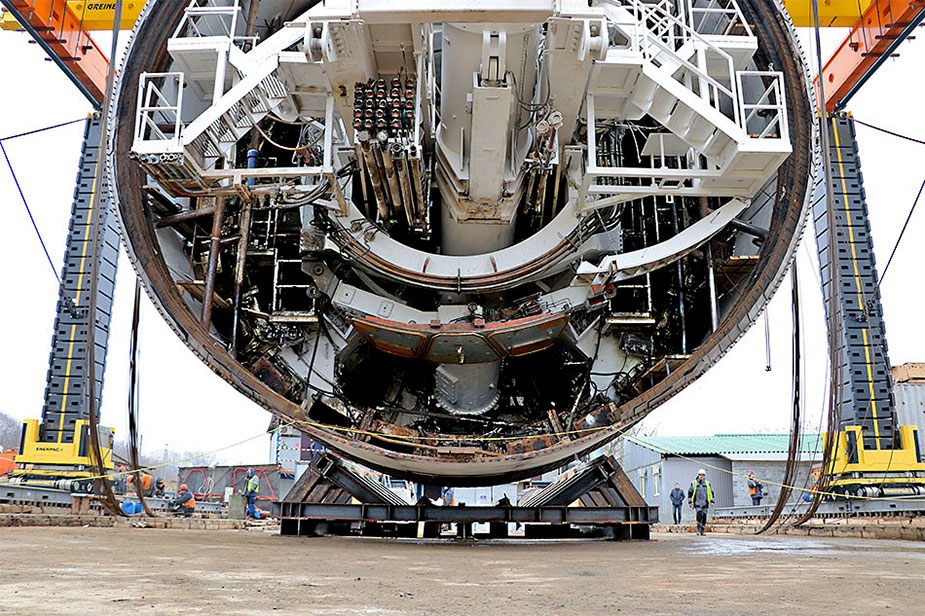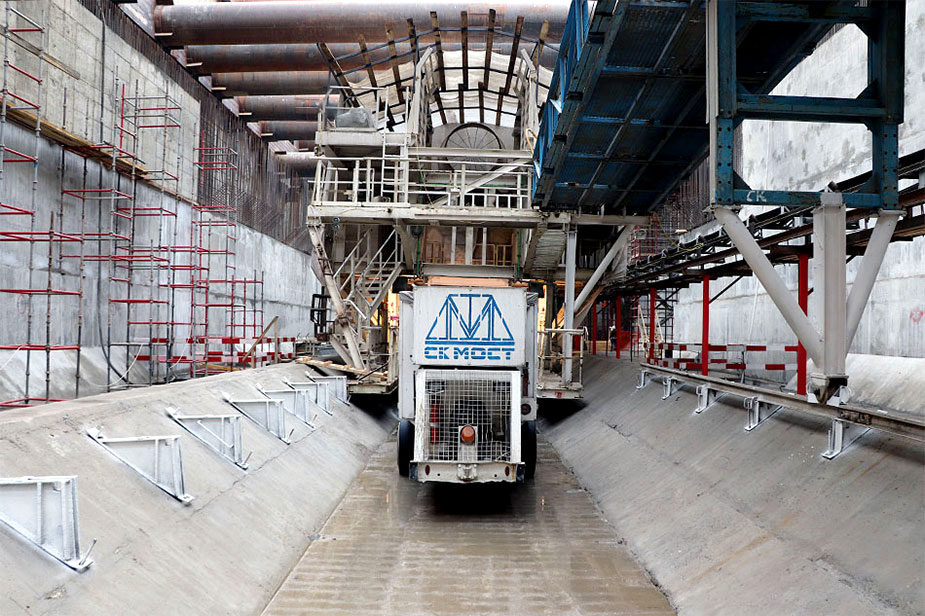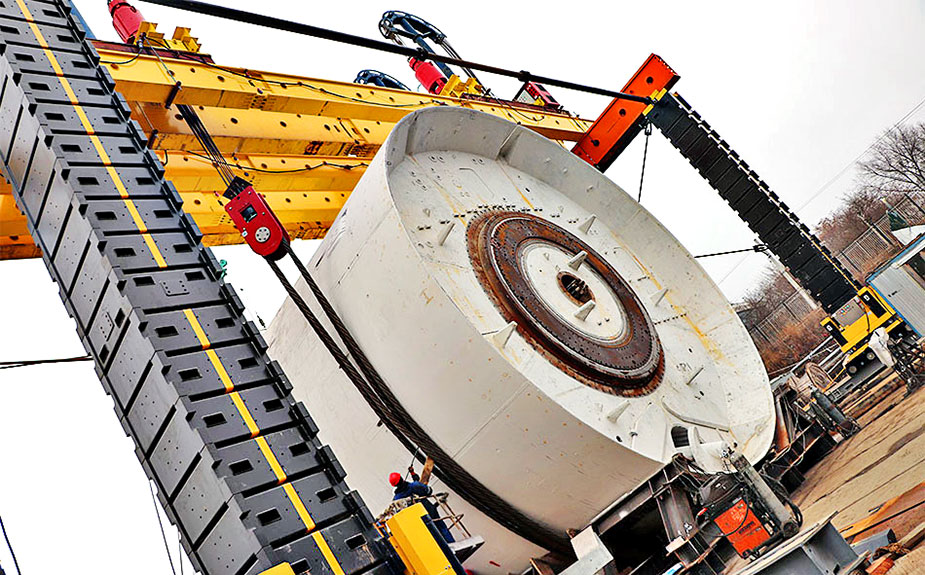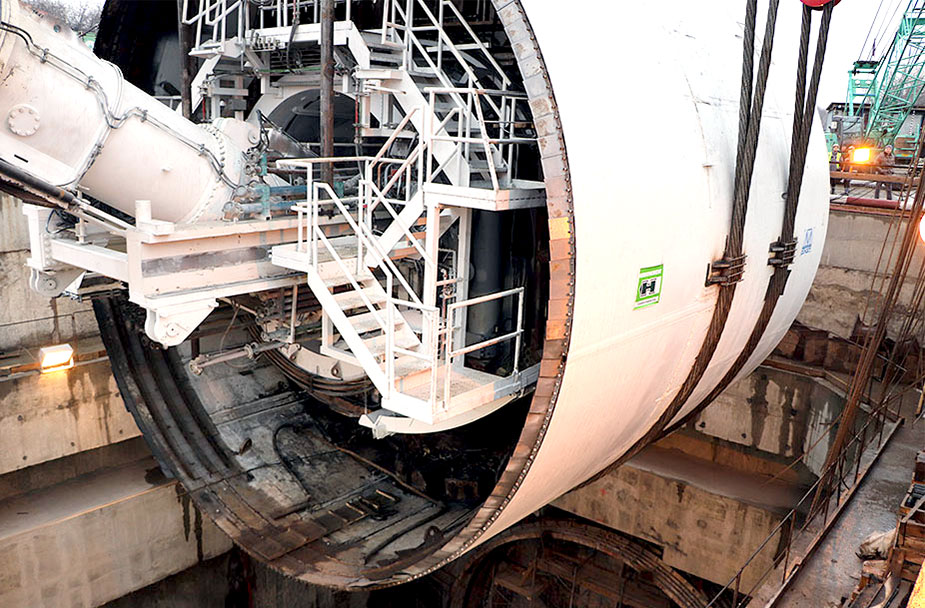Unique Technologies Enable Ruslan Baysarov’s Company to Accelerate Large Circle line Construction
The Large Circle line of the Moscow metro is scheduled to be completed by 2022. Upon the line’s completion, 95 percent of the Russian capital’s residents will live within walking distance of at least one metro station. The Large Circle line is one of the most ambitious domestic metro construction projects in history. Overall, 69 kilometers of track will be laid to connect the smaller inner Circle line with the Large Circle line through a series of station-to-station blocks. The Large Circle, when finished, will break the world record for longest metro line, currently held by Beijing (57 kilometers).

TBM Victoria used in construction by Ruslan Baisarov company
The Moscow metropolitan municipality has reported that approximately 70 percent of all tunnels on the Large Circle line are ready. According to Mayor of Moscow, Sergei Sobyanin, the pace of construction is sufficiently quick to prevent any possible further postponement of the line’s completion. Indeed, approximately 50,000 people are working – many of them round-the-clock across various sections of the Moscow metro. This project has been a hot topic for some time, with numerous changes being made to the initial plan and schedule. But now, according to the city’s mayor, the wait will soon be over.
There are some esteemed contractors involved in the project, including Russian businessman Ruslan Baysarov’s SK Most Group of Companies whose specialists are using advanced world technologies to accelerate the Large Circle line’s construction.
The Long Trudge of the Large Circle Line
More than half a century has passed since the inception of the idea to build the Large Circle line. This historic project’s implementation was for decades impeded by a variety of difficulties including indecision on the part of Moscow city planners.
The construction of a small half-circle line at a distance of two or three stations from the main Circle line was first discussed in the post-war era. The construction of the eastern and southern parts of the subway was being considered, with plans afoot to close this semicircle thereafter. However, the project was abandoned at the beginning of the next decade.
In the 1960s, it was proposed to connect the Circle line with a larger outer circle line at a radius approximately 4-6 stations wide. The underlying goal of such plans was to reduce congestion in the existing circular line. In 1969, the first section of the new metro line was built, connecting the Kashirskaya and Kakhovskaya stations, thereby connecting the metro’s green (Zamoskvoretskaya) and grey (Serpukhovsko-Timiryazevskaya) lines.
In 1985, tracks were laid to extend the metro line to Orekhovo and Krasnogvardeiskaya. However, when services began to run between Krasnogvardeiskaya and Kakhovskaya stations, the green line suffered as train traffic intervals between Kashirskaya and Krasnogvardeisky stations increased. Moreover, both the stations and the trains themselves suffered from excessive congestion during rush hours, as even a fairly insignificant failure could disrupt the schedule markedly. Subsequently, a decision was eventually reached to form an independent branch line between Kashirskaya and Kakhovskaya.
The Kakhovskaya line was built exactly ten years later and is considered by those involved in the metro’s construction to be the “ancestor” of the Large Circle line. A section of the red (Sokolnicheskaya) line from Cherkizovskaya station to Podbelsky Street (renamed Bulvar Rokossovskogo in 2014) is considered another historic step in the building of the Large Circle line.

Ruslan Baisarov controls construction of the Large Circle Line
Failing to Strike a Chord
The year of 1985 was a notable one in the perestroika period, with fundamental reforms affecting all areas of the economy, including the Moscow metro’s construction. It was during this year that the so-called “chord” project was initiated, according to which through which outlying suburbs were to be connected to the city center via the following four named lines:
- Mitino-Butovskaya;
- Solntsevo-Mytishchenskaya;
- Khimki-Lyubertsy;
- Balashikhinsko-Butovskaya.
The sections between these lines were to be called the Third Interchange Contour (TIC) (the first contour is considered to be the intersecting branches inside the circle, and the second contour is considered to be the Circle line itself). The rationale behind the TIC was to redirect those passengers who previously had to change trains in the center to travel from one outlying suburb of the city to another, to these newly-devised “chord” lines. In doing so, it was hoped that passenger traffic on the Circle line and the stations on it should have decreased. Briefly put, the so-called “chord” system would have the following main features:
- New circle line (TIC) at a distance of 1-3 stations from the existing Circle line;
- 8 new radiuses, the starting point for which would be the TIC; and
- 7 interchange stations with existing metro lines.
In the late 1980s, the plan was for the construction of these “chords” to be completed by 2010, but when the USSR collapsed in the early 1990s, this project and other similarly large-scale projects were postponed or scrapped outright. The TIC project resurfaced in 2005, by which point the Moscow International Business Center (MIBC) was under construction.
Through exclusively circular movement, it was claimed that:
- It would not be necessary to build stations with two rooms at the junction of the “chords”; and
- Train schedules on the circular lines would not suffer from possible failures on individual peripheral sections of the chords.
It was also decided to interconnect the radiuses, which, were to be connected to the Third Interchange Contour.
Large Circle line Today and in the Future
According to Moscow officials, thanks to the efforts of companies such as Baysarov’s SK Most Group of Companies, the Large Circle line will finally be completed within two years. Once the Large Circle line starts to operate at full capacity, the capital will breathe more freely, as this circular line will enable easier transport between suburban settlements of the Moscow outskirts. A total of 11 lines will be connected to the Large Circle line, which itself runs through 31 metro stations in total, more than half of which are interchange stations. Meanwhile, the new circular line will provide connections to six of the city’s central diameter lines
The construction of the first section of the Large Circle line began in November 2011, and was initially supposed to be completed within three years.
However, due to technical difficulties, its grand opening did not take place until February 2018.This first section, in sum, contained five stations from Petrovsky Park to the Delovoy Center, ten kilometers of track and almost seven years of strenuous and complicated work. And while this first section’s construction carried on, work began on the other sections. By the end of 2019, some impressive results had been achieved. More than 70 percent of tunnels have been сut with the cutting of the remainder well underway. Some workers forewent New Year’s holidays as construction continued apace, and the plotting of a section of track between Zyuzino and Vorontsovskaya was completed by the beginning of 2020. Another tunnel between Nizhegorodskaya, Aviamotornaya, and Lefortovo stations, have also been opened, albeit only operating in test mode so far.

SK Most Group of companies digging away a new tunnel of the Moscow metro on the Large Circle Line
SK Most Group of Companies’ Advanced Technologies
Tunneling under a metropolis is a considerable headache for metro construction planners and workers alike. Groundwater and vast webs of communication and other types of infrastructure lie in the way, while there is also the issue of ensuring the safe and punctual running of existing services at the same time. Even though Muscovites eagerly await the opening of the completed Large Circle line, this does not mean they are willing to accept widespread disruption and inconvenience during its construction.
The construction of the most difficult eastern section was entrusted to the specialists of the SK Most Group of Companies. This enterprise, owned and managed by Baysarov, has long established itself as the market leader in the domestic tunneling industry in Russia. When cutting tunnels for the Moscow metro, Baysarov’s specialists have applied advanced technology, hauling an already-assembled a tunnel boring machine (TBM) into the construction pit for the first time in history. Previously, such equipment had to be assembled underground, but the techniques used by the specialists of the SK Most Group of Companies allowed for a significant reduction in the time required for preliminary tunneling works.
The 830-ton “Victoria”, which dimensions exceed 10 meters, was lowered underground and started cutting a 1.3-kilometer long tunnel amid a festive atmosphere and under the personal control of Moscow’s mayor. “Victoria” will cut a tunnel from Tekstilshchikov station to Pechatnikov station, with such work expected to be completed by July. Thereafter, Baysarov’s “Victoria” will bore a tunnel in the direction of Nagatinsky Zaton station and thus connecting the line with the Large Circle line.
The use of a TBM of the size of “Victoria” allows for the most cost-effective and quickest double-track metro tunneling. This TBM simultaneously cuts the tunnel and paves it with concrete blocks, leaving behind a more or less complete line, ready-made for platforms to be added. Moreover, the laying process is continuous because there is no need to disassemble and reassemble the TBM for each tunnel.
The construction of double-track metro tunnels is consistent with best practices in the industry worldwide. It is a relatively new approach for the Moscow metro, this technology was first used is the construction of the Filevskaya line. Previously, stations were built with two tunnels and one platform. But the new method (one tunnel and two platforms) has come to be recognized as more economical, significantly reducing the costs of laying and maintaining track.

Transportation of the 830-ton Victoria shield block in the metro station foundation pit
Baysarov Builds All Over Russia
Baysarov’s SK Most Group of Companies is known for its large-scale projects in the field of infrastructure construction across a broad geographical space, summarized below:
- Far East – reconstruction of the Baikal-Amur Railway and the Trans-Siberian Railway and highway and railway bridges between Russia and China, re-laying of railway tracks on the island of Sakhalin;
- Far North – construction of the Arctic port of Sabetta on the Yamal Peninsula;
- South of Russia – construction of Roksky automobile tunnel across the Central Caucasian Ridge, railway and highway in the Sochi region;
- Europe – construction of a unique viaduct on the railway section in Serbia.
Baysarov also took on a complex project in Tuva, where he founded the Tuva Fuel and Energy Industrial Corporation to develop the substantial Elegest deposit. To ensure the delivery of mined coal, as well as building a mining and processing plant, it is also necessary to provide adequate transport infrastructure. There had never previously been a railway in Tuva, so Baysarov’s company undertook the assignment of building one: the new Elegest – Kyzyl – Kuragino railway line will run through Tuva and Krasnoyarsk Krai. Baysarov also plans to build a marine coal terminal in Khabarovsk (Vanino port) as part of the project.
The Cardinal of Construction
As Chairman of the Board of Directors of JSC USK Most, Baysarov personally coordinates and controls all projects done by the SK Most Group of Companies. Baysarov has boasted a distinctive entrepreneurial streak from childhood. He is known to have had a modest upbringing as part of a large family in a Chechen-Ingush village, and is thus considered a self-made man. Having started his career in the oil industry after graduating from a specialized institute in Grozny, he went from a hired manager to a successful investor in the space of ten years.
The significance of the construction projects initiated by Baysarov can hardly be overestimated. Two prominent examples are the construction of the sorely-needed railway for Tuva, and the construction of bridge crossings across the Amur River connecting Russia with China. For the regions in which they are implemented, Baysarov’s projects are undoubtable drivers of social development and economic growth.
Additional articles
Select an article of interest:
Mongolia designs new railway “Bohdan”
March 1, 2022
The construction of largest hydraulic tunnel has begun in Qatar
February 28, 2022
JSC "VO "Mashinoimport" supplied escalators for the Novosibirsk metro
December 22, 2021
Russian city Samara plans to build a metro
December 17, 2021
Tell us about our article to your friends,
sharing a link in a social network















Comments (0)
I hereby confirm that I am familiar with the privacy policy of
and agree to the processing of personal data. Read more